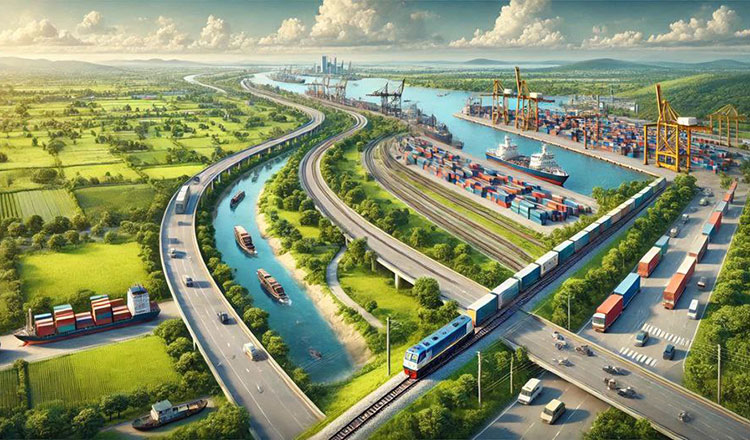Cambodia’s containerized import and export cargo movement has increased more than five-fold over the past 12 years and is set to double again by 2030, straining the market’s logistics capacity.
Accordingly, high transport and logistics costs remain major bottlenecks to Cambodia’s future economic competitiveness and diversification.
In light of this, a new report by the World Bank seeks to streamline efforts made by the Royal Government of Cambodia (RGC) to improve logistics networks under its Comprehensive Intermodal Transport and Logistics System (CITLS) Master Plan for 2023–2033, by recommending immediate investments and policy actions to unlock opportunities along the existing transport corridors in Cambodia, easing logistics costs and efficiencies in the near future whilst other more major infrastructure development projects take shape.
The World Bank report, entitled ‘Cambodia’s Regional Connectivity: Unlocking the Full Potential of Transport Corridors,’ noted that many of the projects put forward in the current CITLS remain in a conceptual phase, requiring further technical studies and prioritization prior to securing financing from the public and private sectors.
Therefore, the World Bank’s analysis, produced in cooperation with the Ministry of Public Works and Transport (MPWT) and other major industry stakeholders, aims to complement the RGC’s efforts by focusing on the short to medium-term priorities of the CITLS, providing alternative insights on the role and performance of existing roads, waterways and maritime transport, railways, and cross-border trade facilitation.
According to the report’s findings, while road transport dominates domestic freight movements, only 38 percent of provincial roads and 10 percent of rural roads are paved, limiting accessibility and increasing vehicle operating costs.
Meanwhile, despite improvements in cross-border trade facilitation, the World Bank’s report said that customs clearance processes still remain slow, with inadequate digital infrastructure delaying progress.
The report also highlighted that the Kingdom’s inland waterways and rail transport links currently play relatively minor roles in Cambodia’s broader logistics networks.
Together, these inefficiencies rank Cambodia 115th out of 138 countries in the World Bank’s Logistics Performance Index.
Due to this status quo, the World Bank recommended a dual approach to improve Cambodia’s logistics systems, including immediate, low-cost interventions alongside long-term infrastructure investments.
Short-term priorities noted by the bank included upgrading the Siem Reap-Oyadav highway.
The World Bank said that the East-West road corridor, which connects Cambodia with Thailand, Vietnam, and Laos, remains a “critical but underdeveloped” link.
Poor conditions, particularly between Siem Reap and the Vietnam border, currently limit its economic potential, the report said.

